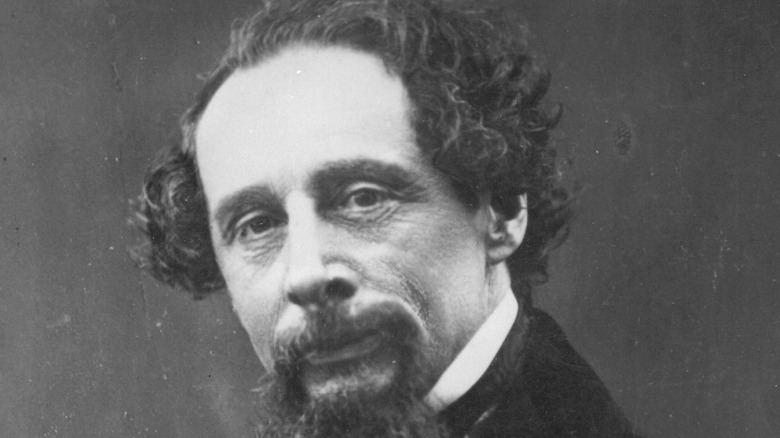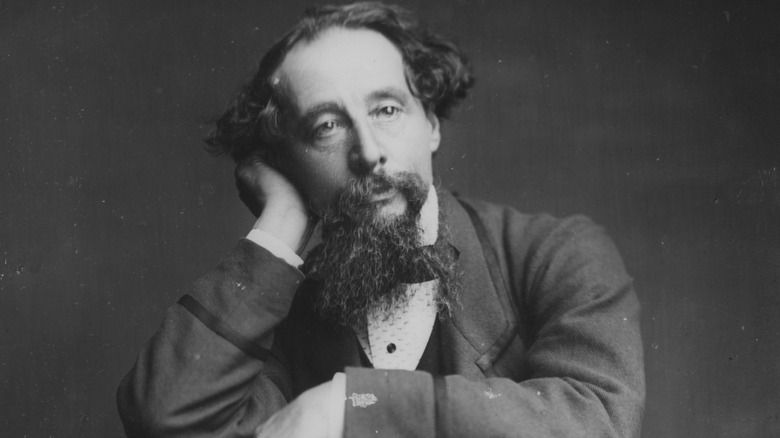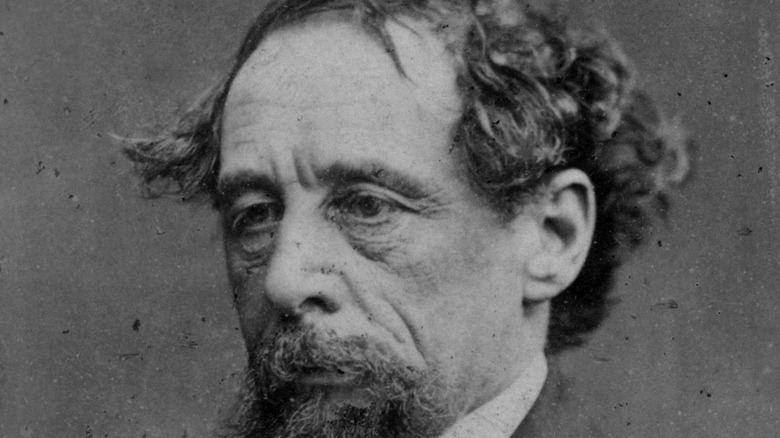What You Didn't Know About Charles Dickens' Affair
"Life has no charms, no happiness, no pleasures, now for me," Charles Dickens once wrote in a love poem (via The Guardian), "Like those I feel, when 'tis my lot Maria, to gaze on thee."
The "Maria" in question was Maria Beadnell, whom Dickens met while working as a reporter in May 1830, per The Guardian. He was 18 years old at the time and she was 20. Dickens went on to pursue Beadnell for more than two decades, and she even inspired the characters Dora Spenlow (in "David Copperfield") and Flora Finching (in "Little Dorrit").
"In his youth," Dickens wrote of Arthur Clennam and Flora Finching in "Little Dorrit," "he had ardently loved this woman, and had heaped upon her all the locked-up wealth of his affection and imagination. That wealth had been ... lying idle in the dark to rust, until he poured it out for her."
Dickens pursued Beadnell in earnest for three years before she pushed him away and they lost touch — but that wasn't the end of the story for the pair.
Charles Dickens wrote Maria Beadnell letters for years
Though Maria Beadnell was the one that got away from Charles Dickens, he held onto the memory of her. According to Robert Garnett's 2012 biography "Charles Dickens in Love," Beadnell wrote to Dickens years after they first went their separate ways to suggest that they reconnect as friends. Both of them were married, but that didn't stop Dickens from getting swept up in romantic fantasies after reading her words. "You open the way to a confidence between us," he wrote in his reply, "which still once more, in perfect innocence and good faith, may be between ourselves alone."
In a letter to Beadnell circa 1855 — a quarter of a century after their initial meeting — Dickens wrote (via The Guardian), "Whatever of fancy, romance, energy, passion, aspiration, and determination belong to me, I never have separated and never shall separate from the hard-hearted little woman – you – whom it is nothing to say I would have died for, with the greatest alacrity! ... It is a matter of perfect certainty to me that I began to fight my way out of poverty and obscurity, with one perpetual idea of you."
Charles Dickens anticipated reunion with Maria Beadnell was a shocking disappointment
As Claire Tomalin wrote in her 2011 biography "Charles Dickens: A Life," Maria Beadnell "seemed enchantingly pretty to [Dickens], even with eyebrows that almost met in the middle. She was capricious and, to judge by what she later became, silly."
After reviving their connection through a passionate exchange of several letters, Beadnell and Dickens finally reunited face-to-face. But, to Dickens' dismay, the face before him was not the one he had seen in his mind's eye all those years. In a letter to the Duke of Devonshire following the meeting, Dickens wrote, "We have all had our Floras, mine is living and extremely fat" (via The Guardian).
Following their meeting, Dickens' long, lyrical letters to Beadnell became a thing of the past. After a long gap between letters, the two resumed their correspondence but their later letters "were very short and formal," as The Charles Dickens Museum curator Louisa Price told The Guardian. "Poor Maria."


